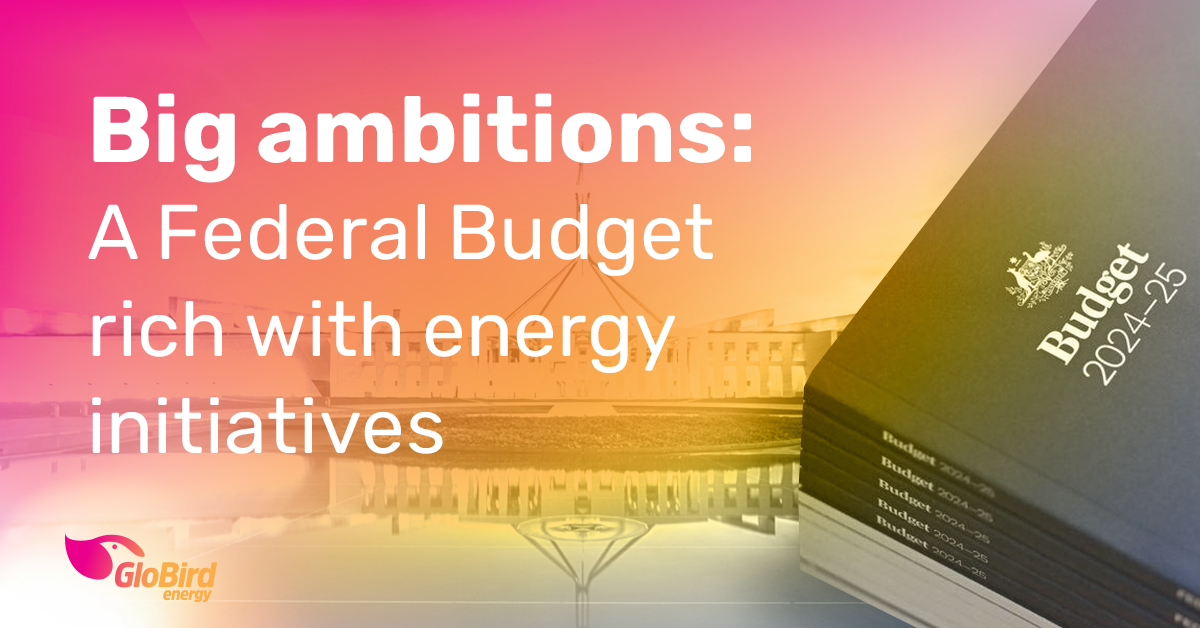Treasurer Jim Chalmers delivered a relatively upbeat and positive May 2024 Federal Budget, an impressive feat given the general doom and gloom around the economy, interest rates, and the cost of living.
Looking at what was in the Budget purely from an energy sector perspective, there is plenty to digest, with a decent swathe of funding and some exciting, if ambitious, initiatives.
The headline: A renewable energy superpower
With the delivery of the Budget, the Government fleshed out more of the detail about how the Future Made in Australia initiative will help us become a renewable energy superpower. Various measures under that umbrella have been conceived to maximise the economic and industrial benefits of the move to net zero.
With a whopping $22.7 billion committed to the Future Made In Australia initiative, the $27.7 million earmarked for the integration of batteries and solar into the grid doesn’t sound like a lot.
However, the major pillar of the Government’s plan to power Australia with cheaper, cleaner, more reliable energy is the Capacity Investment Scheme, which it claims will “unlock” more than $65 billion of investment in renewable capacity by 2030.
There is also a $1.5 billion commitment to manufacturing clean energy technologies, including the Solar Sunshot and Battery Breakthrough Initiative.
Arena is in charge for the next 10 years
The Australian Renewable Energy Authority, Arena, has had its remit extended for the next decade. It will oversee the Solar Sunshot and Battery Breakthrough as well as the $1.7 billion Future Made in Australia Innovation Fund.
There’s also $1.9 billion to “recharge” Arena’s core mission: nurturing, commercialising, and deploying new technologies seen as essential to the clean energy superpower mission.
Meanwhile, the Net Zero Authority, responsible for helping communities threatened by the energy transition to shift to new industries, receives $1 billion over a decade.
Betting on a big return for investing in valuable resources
Over the next decade, $8.8 billion has been earmarked to add more value to our resources and strengthen critical minerals supply chains. That’s mainly accounted for by an estimated $7 billion that a new tax incentive for processing and refining critical minerals will cost.
There’s $566 million to support Geoscience Australia to map all of Australia’s critical minerals, strategic materials, groundwater, and other resources essential for the transition to net zero.
A further $1.2 billion will be invested in strategic critical minerals projects through the Critical Minerals Facility and the Northern Australia Infrastructure Facility, and pre‑feasibility studies for common user precincts.
A skilled workforce and a cleaner manufacturing industry
The Budget included quite a few measures that might not seem all that significant individually, but when viewed all together signal a clear commitment to a renewable future. In addition to those we’ve already mentioned, like the Solar Sunshot and Battery Breakthrough, funding was allocated for:
Renewable hydrogen
A Hydrogen Production Tax Incentive will provide a $2 incentive per kilogram of renewable hydrogen produced from 2027-28 to 2039-40, for projects that reach final investment decisions by 2030. This is estimated to cost $6.7 billion over the decade and it will operate alongside the expanded Hydrogen Headstart program, which received a further $1.3 billion in funding.
Community engagement
$20.7 million over seven years to improve community engagement in energy infrastructure, improve community benefits realisation in regional communities, and permanently establish the Australian Energy Infrastructure Commissioner.
Consumer energy resources
$27.7 million to better integrate consumer energy resources (CER) and electric vehicles (EVs) into the grid.
Building capability and diversity
$91 million over five years to expand the New Energy Apprentice Program and VET clean energy course. There is also $55.6 million for the Building Women’s Careers Program and $38.2 million to support diversity in science, technology, engineering, and maths.
Net zero investment
$209.3 million to expand the Net Zero Economy Authority, catalyse private and public investment, and support workers affected by the transition.
Let’s not forget the energy bill relief
While most of the above will take some time to get going, let alone have any significant impact, and much of it is going to happen in select industries and areas, there was one thing in the Budget that will impact us all directly in the next 12 months.
The announcement of $3.5 billion of energy bill relief is very welcome short-term financial assistance for all Aussies battling the high cost of living.
From 1 July 2024, more than 10 million households will receive a total rebate of $300 and eligible small businesses will get a rebate of $325 on their electricity bills throughout the year.
Your $300 rebate will be automatically applied to your bills in quarterly instalments through the 2024-25 financial year.
